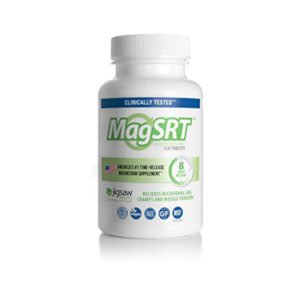By Emmy Costello, Buzzworthy Blog
Supposedly, I had osteoporosis.
Supposedly, Fosamax would help.
Instead, Fosamax destroyed my bones and life.
I was prescribed Fosamax by Merck because I was a supposed candidate for osteoporosis.
It started in 2005, when I went to have a cavity filled and was informed I had developed an infection and needed a root canal. I was meticulous with my teeth, making sure I brushed and flossed regularly. I was bewildered.
The root canal was performed on my lower right molar, and days later, my jaw hurt and my face had swelled abnormally. I was sent to an oral surgeon, who had to pull the tooth.
“Wow, this shouldn’t be happening because of a routine root canal,” he remarked.
Meanwhile, an infectious-disease doctor placed me on strong antibiotics, which I was on for several months.
About six months later, I woke up to realize I suddenly couldn’t walk. My left ankle was now hurting. I wondered how I was going to manage as a single mom with four-and-a-half-year-old twins. The orthopedic surgeon said the only thing I could do was wear a foot brace and take pain meds until they figured out what was going on with my jaw.
Eventually, an oncologist at the Huntsman Cancer Center figured it out. He pulled out a medical magazine and said, “This is what is happening to you.” He showed me a report of people losing their jaws due to rotting or disintegration of their bones from Fosamax and similar drugs.
The year I was prescribed, Fosamax, it made Merck $3.2 billion in sales.
I had developed osteonecrosis of the jaw, a “rare” side effect of Fosamax. Merck has reportedly said the “underlying cause” of osteonecrosis of the jaw is “uncertain,” though it often is triggered by a traumatic event, such as a tooth extraction or oral surgery.
ONJ is a terrible condition in which, basically, the bone tissue in the jaw begins to rot, causing the bone to be exposed. The exposure can eventually lead to infection and fracture and may require long-term antibiotic therapy or surgery to remove dying bone tissue. Four percent of folks develop this side-effect.
Fosamax, F***ing People One Bone At A Time
Fosamax is prescribed to people with osteoporosis, the bone-thinning disorder that leaves patients vulnerable to life-threatening fractures. Ironically, aside from jaw bone decay, the drug has been linked to atypical femur fractures. Merck is now facing more than 4,000 femur-fracture lawsuits.
Fosamax is made out of a chemical called “bisphosphonate,” a class of drugs that are used mainly as corrosion inhibitors or as complexing agents in the textile, fertilizer, and oil industries. That’s why doctors sometimes suggest patients take a “holiday,” a vacation from their meds.
“This is just the beginning,” the oncologist warned. I told him my GP had encouraged me to take the stuff. He told me my ankle was likely rotting too and that I needed to find myself a lawyer.
My infection was not going away, despite being on antibiotics for a year. By now, the jaw bone had broken in two, so the surgeon removed the rot with a chisel and hammer.
Then, I was placed in a hyperbaric chamber for 40 days and finally my jaw began to heal. Next, I searched all over the country for someone who could help me with my ankle. I went to the Cleveland Clinic. First I flew from Albany, N.Y., and then took a train, then the bus, hobbling as best as I could to get to Ohio.
I waited for more than one hour for the doctor. When he finally looked at my ankle and my X-rays, it took him only 20 seconds to say, “No one here can help you.”
The next doctor I visited was an expert in ankle reconstruction in Baltimore, Md. But he said surgery was impossible and that my foot should probably be amputated. I had heard this before, but I refused. I started looking into soldiers with blown off limbs to find the doctors responsible for fixing them up. It was Dr. John Kennedy, a foot and ankle surgeon, who saved my foot.
He operated and placed steel scaffolding around my foot and ankle, drilling 16 steel pins into my leg bone. I kept this on for six months. Eventually, he removed the steel and put me in a cast. When the cast came off about two weeks later, my leg was infected.
I went home with antibiotics and five days later my leg was red, swollen, and I was in serious pain. The emergency room near me didn’t want to touch me. I spent months in and out of the hospital, trying to get rid of the infection before it killed me, or before they would end up amputating my leg.
Fosamax and Osteoporosis: Helping or hurting?
Fosamax is a toxic chemical used for bone-health solutions. Strange, huh? In fact, some researchers say that when taken for more than 10 years, Fosamax will actually make bones more brittle and, thus, more susceptible to fracture. And, even if patients stop taking the drug, doctors say, it can stay in the body for up to 10 years before the body gets rid of 50 percent of it.
I later learned that Merck had installed a bone density scanner in my GP’s doctor’s office and the bone scan was part of their tactic to scare women into taking Fosamax if the results showed thinning bones, leading them to believe they were likely to get osteoporosis. Furthermore, it turned out, they had also paid for the recruitment and participation of all 327 clinical trial subjects. The company collected the data from 25 separate facilities for which Merck employees handled “coordinating the early phases of the study” and provided “expertise in study conduct.” In the end, Merck retained control and ownership of the research itself.
After all my surgeries, hospital care, and doctors, I spent more than $1.2 million on my leg alone. Today, I am permanently disabled and struggle to make ends meet. Meanwhile, Fosamax is still on the market and dispensed like candy.
Please consider helping Emmy by donating to her gofundme project:
To learn more about dangerous osteoporosis drugs like Fosamax:
 Emmy Costello
Emmy Costello
is a single mom of twins, a boy and girl named Emmy & Jeff who have helped her endure some really tough times. Once upon a time, Emmy was a fit model for a shirt company in NYC and was a professional cook & baker. Now due to severe injuries she is unemployed. She lives in Manhattan presently while looking for a job & continuing with treatment at the Hospital for Special Surgery (HSS), a top ranked New York hospital for orthopedics and rheumatology.
Submit your story or essay to Buzzworthy Blogs.
-
 Jigsaw Magnesium With SRT$22.97 — or subscribe and save up to 5%
Jigsaw Magnesium With SRT$22.97 — or subscribe and save up to 5% -
Sale Product on sale
 Just Thrive K2-7
Just Thrive K2-7$149.97Original price was: $149.97.$74.97Current price is: $74.97.




2 thoughts on “I Took Fosamax for Osteoporosis – It Destroyed My Bones & Life”
This may sound a bit odd. Yet, since it is my understanding that modified citrus pectin helps the body remove things like heavy metals even from inside the cell, it might be a viable means to flush out bisphosphonate. This is from Naturopathic Medicine. My experience has been that common fiber enhances its effectiveness.
So is foetal bad too. Cause I got osterposis and need hip replacement?
Comments are closed.